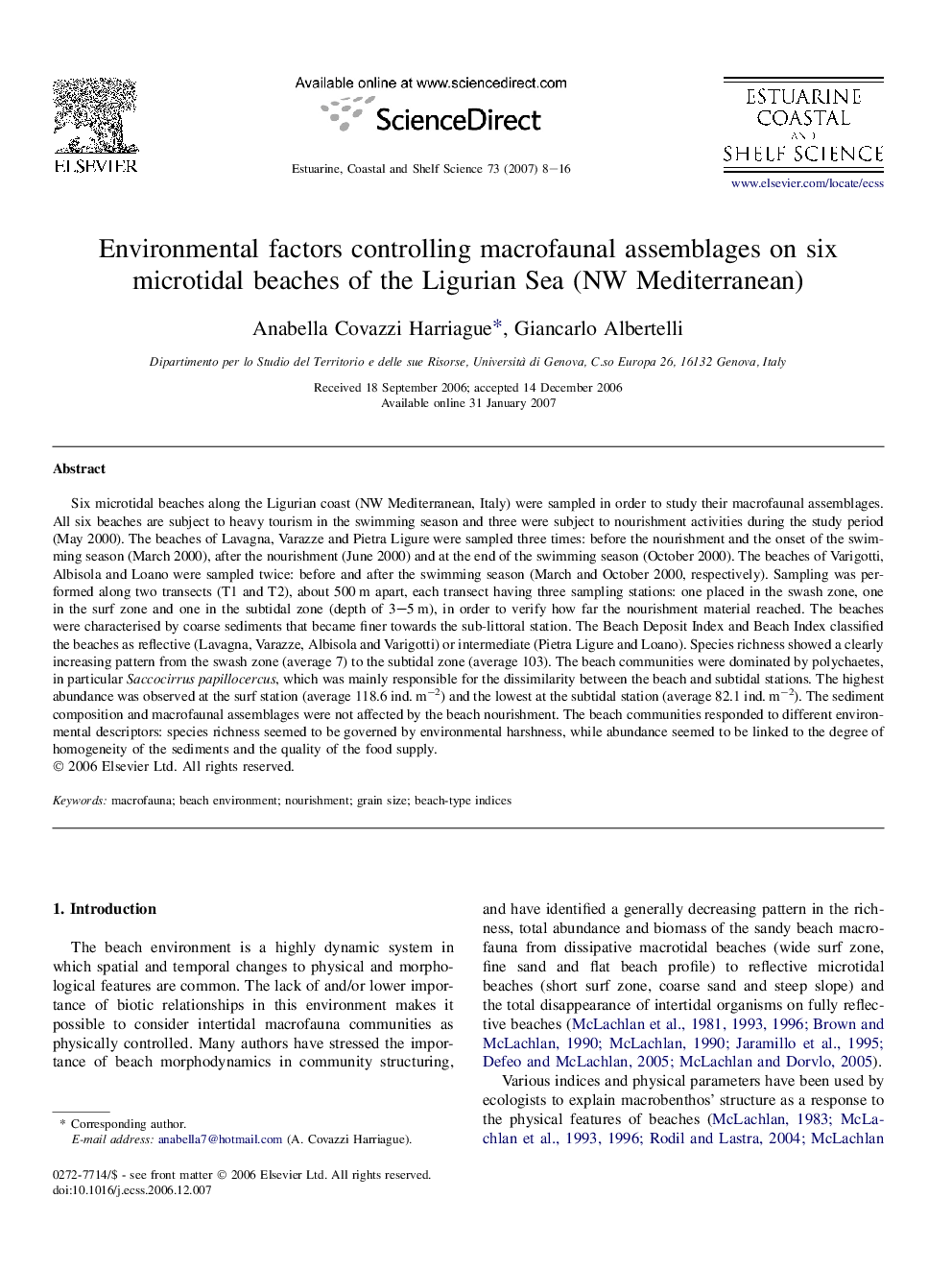| Article ID | Journal | Published Year | Pages | File Type |
|---|---|---|---|---|
| 4541955 | Estuarine, Coastal and Shelf Science | 2007 | 9 Pages |
Six microtidal beaches along the Ligurian coast (NW Mediterranean, Italy) were sampled in order to study their macrofaunal assemblages. All six beaches are subject to heavy tourism in the swimming season and three were subject to nourishment activities during the study period (May 2000). The beaches of Lavagna, Varazze and Pietra Ligure were sampled three times: before the nourishment and the onset of the swimming season (March 2000), after the nourishment (June 2000) and at the end of the swimming season (October 2000). The beaches of Varigotti, Albisola and Loano were sampled twice: before and after the swimming season (March and October 2000, respectively). Sampling was performed along two transects (T1 and T2), about 500 m apart, each transect having three sampling stations: one placed in the swash zone, one in the surf zone and one in the subtidal zone (depth of 3–5 m), in order to verify how far the nourishment material reached. The beaches were characterised by coarse sediments that became finer towards the sub-littoral station. The Beach Deposit Index and Beach Index classified the beaches as reflective (Lavagna, Varazze, Albisola and Varigotti) or intermediate (Pietra Ligure and Loano). Species richness showed a clearly increasing pattern from the swash zone (average 7) to the subtidal zone (average 103). The beach communities were dominated by polychaetes, in particular Saccocirrus papillocercus, which was mainly responsible for the dissimilarity between the beach and subtidal stations. The highest abundance was observed at the surf station (average 118.6 ind. m−2) and the lowest at the subtidal station (average 82.1 ind. m−2). The sediment composition and macrofaunal assemblages were not affected by the beach nourishment. The beach communities responded to different environmental descriptors: species richness seemed to be governed by environmental harshness, while abundance seemed to be linked to the degree of homogeneity of the sediments and the quality of the food supply.
